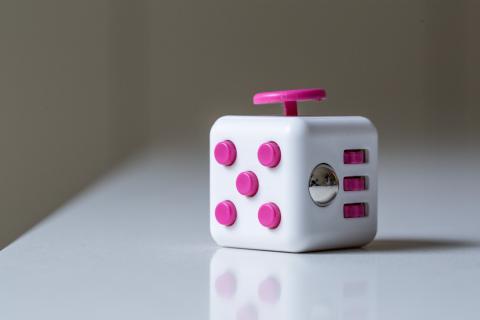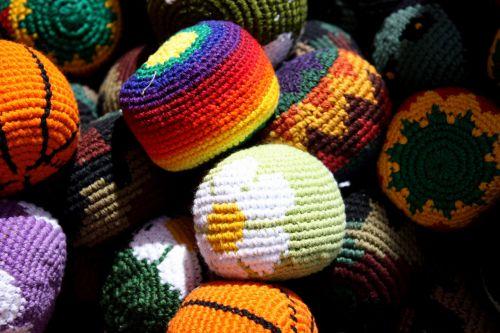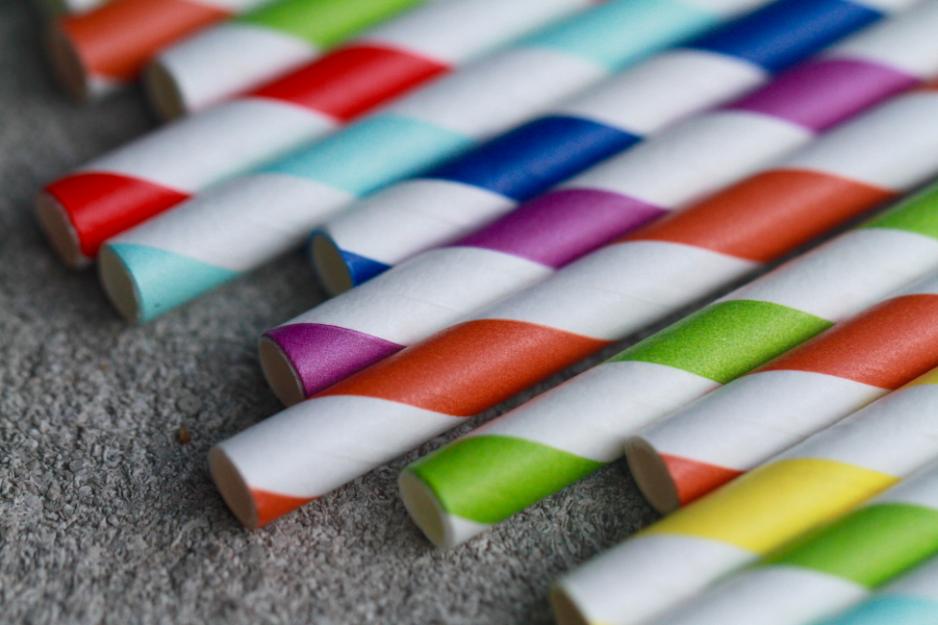
~ 3 minute read
This article was originally published in 2015.
People of all ages can require strategies that help regulate (stimulate or calm) their nervous systems. “Sensory-seeking individuals often continue to crave input as they get older…sensory-seeking can impact an individual’s work, leisure and self-care. Remember the need for intense input does not automatically disappear just because a person is older”.1
What are fidget items?
A fidget item is a small object used to provide input into any of the senses and “may help improve concentration and attention to task”.2 Unless specific items are identified and used in a planned way, people may engage in a wide range of sensory behaviour, that at least can be distracting to others and at worst, harmful.
Guidelines for selecting and using fidget items:
- A good fidget item is one that provides the input being sought, helps maintain a calm, alert state and can be used in a variety of environments, while not causing distraction for the user or those around him or her.
- Additionally, the item should be safe, quiet, relatively small and portable.
- Selection should be based on a number of considerations:
- The sensations and textures the person seeks out or avoids;
- When and where the fidget items are most likely to be needed;
- The person’s fine motor skills and hand strength;
- The suitability of the item to be used in a public place;
- Behaviour that can be socially stigmatizing or dangerous (e.g., putting objects in mouth, throwing items, etc.);
- Items that the person is interested in or motivated to use;
- Have a variety of items available and continue to expand possibilities. Avoid relying on a limited number of very specific items.
Guidelines for introducing and using fidget items:
- Identify where the items will be kept (e.g., in a specific place, in their backpack/ pocket/desk/locker, etc.), as well how and when the person can access them and when they need to be put away.
- Pair accepting and using the fidget item with reinforcement.
- Attach the item to prevent it from being lost.
- Monitor (or teach the person to self-monitor, when possible), not only the effectiveness of the fidget item in meeting sensory needs but also how socially acceptable it is.
Examples
Tactile Fidget Items
- Origami
- Shells, smooth or shiny stones
- Worry beads, dolls, stones
- Jewelry (necklace, bracelet, anklet, digit fidget/ring, earrings, charm bracelet)
- Paperclip/paperclip chain
- Rubik’s cube
- Key chain
- Paper clips, rubber band
- Linking rings
- Small piece of specific fabric
- Hacky sacks
- Leather bracelet
Visual Fidget Items
- Pen toppers or pens with moving parts
- Small sand timer
- Lava lamps
- Glow sticks
- Apps
- Picture books
- Video clips on phone/iPad (e.g., waterfalls, car races, nature, etc.)
Oral Fidget Items
- Hard candy
- Sour candy
- Gum
- Straws
- Crunchy/chewy snacks available
- Pen toppers designed to be chewed
Scented Fidget Items
- Locket with scent inside (necklace or bracelet)
- Preferred air freshener (e.g., in the car, on a timer)
- Incense
- Scented candles
Auditory Strategies
- Earphones, earplugs, headphones
- Jewelry/key rings with chime or soft bell
- Ticking watch
- Music on iPod
Movement (vestibular) and deep pressure
- Daily physical activity/physical education class
- Weight room
- Heavy backpack
- Tie a resistance band to chair or desk legs
- Sit and move cushion
- Fingerless gloves
- Clothing that provides deep pressure
Sensory Strategies Across the Day
One of the most effective ways of meeting a person’s sensory needs is to incorporate individualized items and activities into daily routines or to teach them to access activities that provide the sensory input they require, such as:
- Make favourite scents, colours and textures part of activities;
- Consider sensory needs in self-care routines (e.g., loofa sponge, scented soap, heavy towel, electric toothbrush);
- Incorporate exercise and movement routines (e.g. dancing, stretching, yoga) at intensity needed;
- Allow standing or other alternative seating;
- Create calming routines before bedtime.
References:
1 Jordan, K.A. (May, 2014). Sensory Strategies for Older Students- Sensory Seeking in Teens and Adults. Indiana Resource Centre for Autism. www.iidc.indiana.edu/irca
2 Oakley, B. (August, 2012). 45 Ideas for Classroom Friendly Fidget Toys. Retrieved from http://www.Snagglebox.com/articles.
DISCLAIMER: This document reflects the views of the author. It is Autism Ontario’s intent to inform and educate. Every situation is unique and while we hope this information is useful, it should be used in the context of broader considerations for each person. Please contact Autism Ontario at info@autismontario.com or 416-246-9592 for permission to reproduce this material for any purpose other than personal use. © 2020 Autism Ontario 416.246.9592 www.autismontario.com



